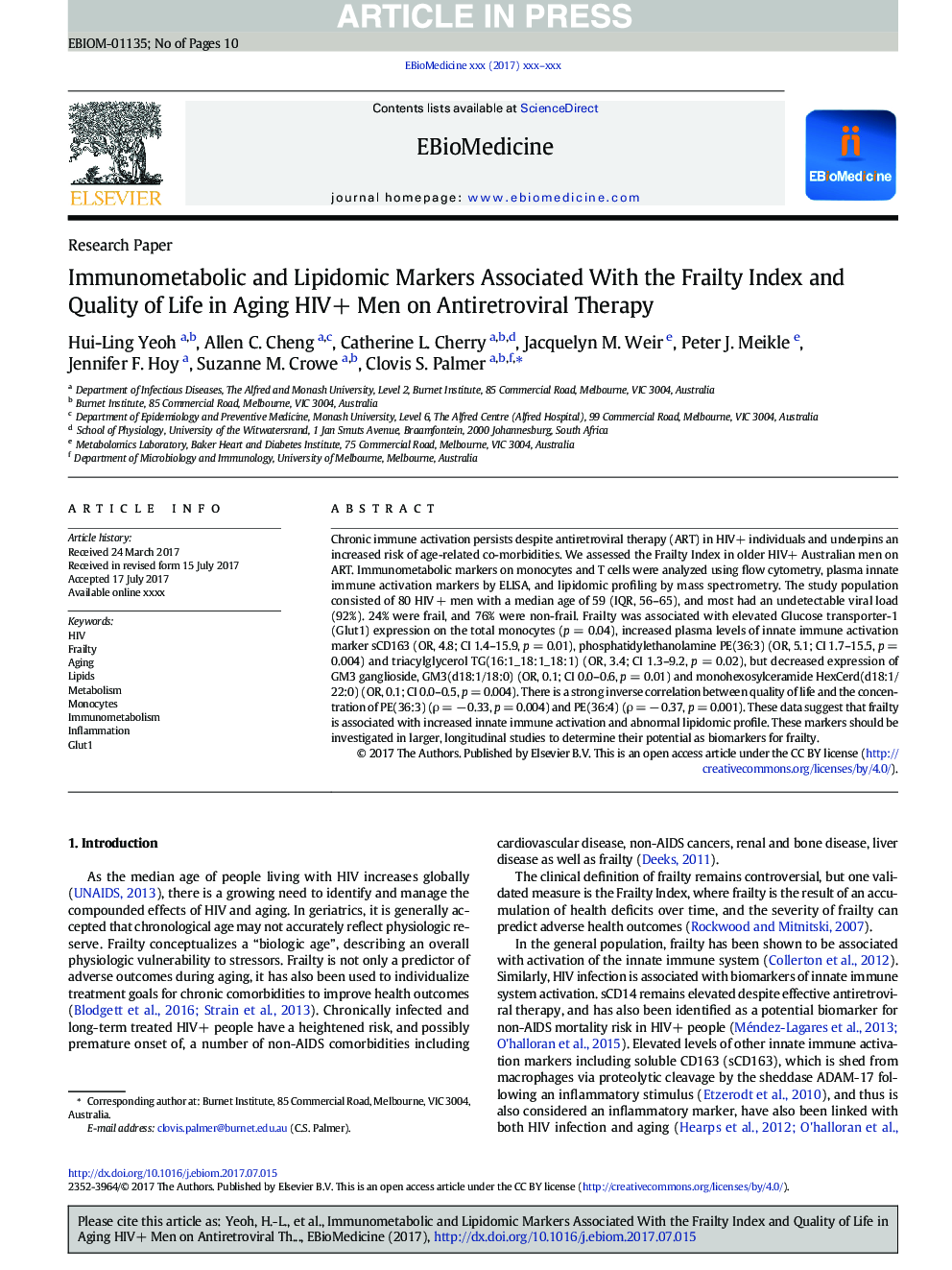| Article ID | Journal | Published Year | Pages | File Type |
|---|---|---|---|---|
| 8438079 | EBioMedicine | 2017 | 10 Pages |
Abstract
Chronic immune activation persists despite antiretroviral therapy (ART) in HIV+ individuals and underpins an increased risk of age-related co-morbidities. We assessed the Frailty Index in older HIV+ Australian men on ART. Immunometabolic markers on monocytes and T cells were analyzed using flow cytometry, plasma innate immune activation markers by ELISA, and lipidomic profiling by mass spectrometry. The study population consisted of 80 HIV + men with a median age of 59 (IQR, 56-65), and most had an undetectable viral load (92%). 24% were frail, and 76% were non-frail. Frailty was associated with elevated Glucose transporter-1 (Glut1) expression on the total monocytes (p = 0.04), increased plasma levels of innate immune activation marker sCD163 (OR, 4.8; CI 1.4-15.9, p = 0.01), phosphatidylethanolamine PE(36:3) (OR, 5.1; CI 1.7-15.5, p = 0.004) and triacylglycerol TG(16:1_18:1_18:1) (OR, 3.4; CI 1.3-9.2, p = 0.02), but decreased expression of GM3 ganglioside, GM3(d18:1/18:0) (OR, 0.1; CI 0.0-0.6, p = 0.01) and monohexosylceramide HexCerd(d18:1/22:0) (OR, 0.1; CI 0.0-0.5, p = 0.004). There is a strong inverse correlation between quality of life and the concentration of PE(36:3) (Ï = â 0.33, p = 0.004) and PE(36:4) (Ï = â 0.37, p = 0.001). These data suggest that frailty is associated with increased innate immune activation and abnormal lipidomic profile. These markers should be investigated in larger, longitudinal studies to determine their potential as biomarkers for frailty.
Related Topics
Life Sciences
Biochemistry, Genetics and Molecular Biology
Cancer Research
Authors
Hui-Ling Yeoh, Allen C. Cheng, Catherine L. Cherry, Jacquelyn M. Weir, Peter J. Meikle, Jennifer F. Hoy, Suzanne M. Crowe, Clovis S. Palmer,
